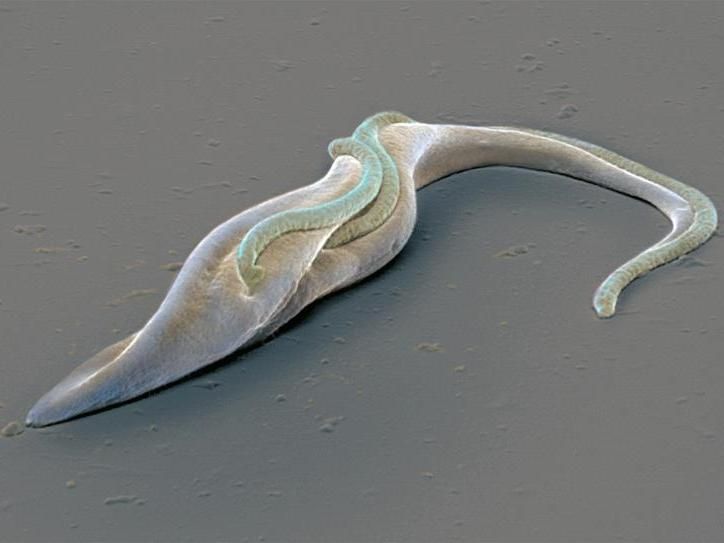Scientists create new tools for battling secondhand smoke
Dartmouth researchers have taken an important step in the ongoing battle against secondhand tobacco smoke. They have pioneered the development of a breakthrough device that can immediately detect the presence of secondhand smoke and even third-hand smoke.

maller and lighter than a cellphone and about the size of a Matchbox car, the device uses polymer films to collect and measure nicotine in the air.
Eli Burakian, Dartmouth
Smaller and lighter than a cellphone and about the size of a Matchbox car, the device uses polymer films to collect and measure nicotine in the air. A sensor chip then records the data on an SD memory card. The technology is described in a new study appearing in the journal Nicotine and Tobacco Research.
"We have developed the first ever tobacco smoke sensor that is sufficiently sensitive to measure secondhand smoke and record its presence in real time," says Professor of Chemistry Joseph BelBruno, whose Dartmouth lab conducted the research. "This is a leap forward in secondhand smoke exposure detection technology and can be considered the first step in reducing the risk of health effects."
The U.S. Environmental Protection Agency says children are especially vulnerable to environmental tobacco smoke. Its effects on the young can include an increased risk of pneumonia, bronchitis, asthma, and Sudden Infant Death Syndrome. While many parents try not to smoke around their children, going to a different room or smoking out on the porch may not be going far enough. Now, for the first time, there is a prototype sensor that will let the parent see whether or not their precautions make a difference.
"The intent of the project isn't to make them stop smoking, but it is to make them stop exposing their children to smoke. On the other hand, if they are worried about their children, demonstrating these exposures may be an incentive for them to stop," BelBruno says.
Secondhand smoke comes from the burning end of a cigarette or from smoke exhaled by the smoker. Third-hand smoke, also a potential health hazard, according to the Mayo Clinic, is nicotine residue that remains on clothing, furniture, car seats, and other material after the air has cleared.
While the current device is a patent-pending prototype, BelBruno foresees the eventual availability of an affordable consumer version that will incorporate a computer processor, reusable polymer films, and a rechargeable battery. It may even incorporate an LED panel to provide instantaneous readouts.
In addition to its uses in safeguarding childhood health, there are commercial applications for these unique detectors. Installed in rental cars, hotel rooms, and restaurants, this device could help enforce owner and operator smoking bans through an alert system, much like existing, ceiling-mounted smoke detectors.
Before the secondhand smoke project, BelBruno's lab had been working on sensor development for problem molecules such as heavy metals and other toxins in the water and the air. BelBruno says that David Kotz, the Champion International Professor of Computer Science, was the catalyst for the secondhand smoke project.
"He knew that people at the Geisel School of Medicine at Dartmouth were interested in doing a study to try to reduce children's exposure to secondhand smoke, and he knew that we were working on sensors. He got us together, we talked, and this project came out of it."
Given the hundreds of compounds in cigarette smoke, BelBruno's group began with a plan for a multi-component sensor but found this approach unnecessarily complex. The sensor they came up with detects cigarette smoke alone, simply and efficiently.
Other news from the department science

Get the life science industry in your inbox
By submitting this form you agree that LUMITOS AG will send you the newsletter(s) selected above by email. Your data will not be passed on to third parties. Your data will be stored and processed in accordance with our data protection regulations. LUMITOS may contact you by email for the purpose of advertising or market and opinion surveys. You can revoke your consent at any time without giving reasons to LUMITOS AG, Ernst-Augustin-Str. 2, 12489 Berlin, Germany or by e-mail at revoke@lumitos.com with effect for the future. In addition, each email contains a link to unsubscribe from the corresponding newsletter.
More news from our other portals
Last viewed contents
One-step test for hepatitis C virus infection developed
Brain cancer experts crowdsource a cure for deadly glioblastoma
Amgen to Acquire Abgenix - Provides Amgen With Full Ownership of Panitumumab and Eliminates a Denosumab Royalty

CORDOUAN TECHNOLOGIES SAS - Pessac, France

Deutsche Gesellschaft für Kardiologie – Herz- und Kreislaufforschung e.V. - Düsseldorf, Germany




















































